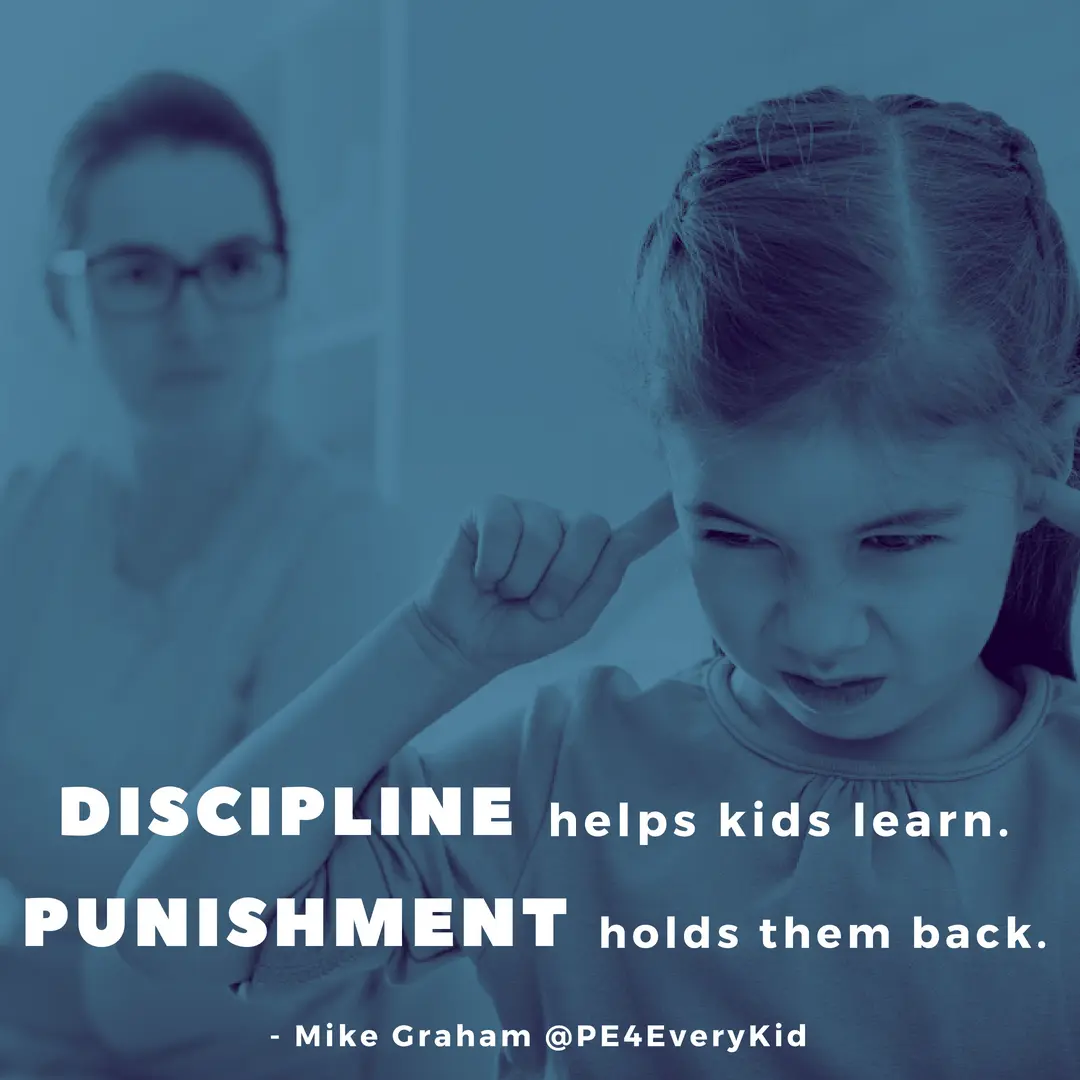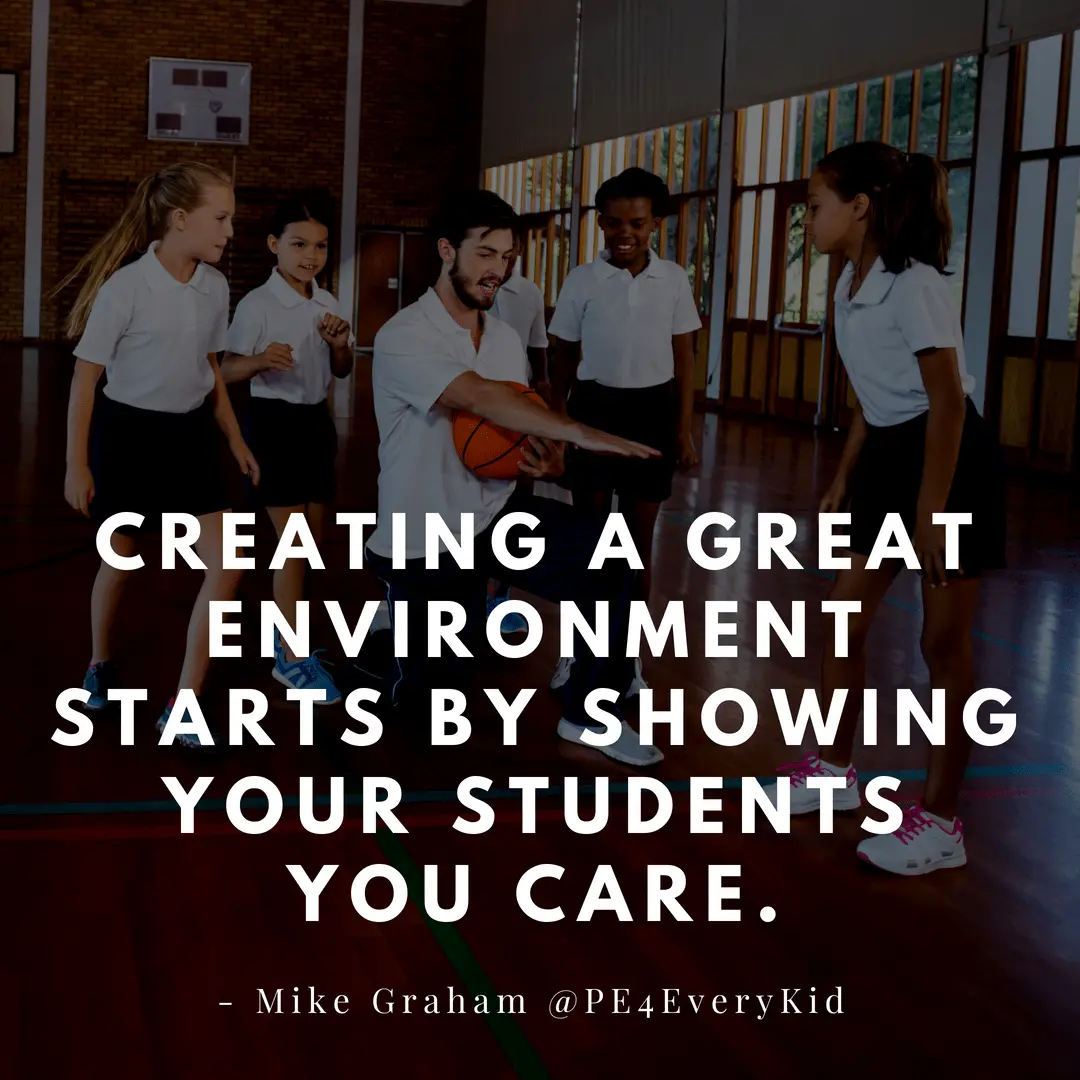Isn’t it easy to get stuck in a rut? I mean, sometimes you don’t even know you’re stuck. You may be struggling to “survive” in those early years of teaching or perhaps you’ve become “comfortable” with the way you do things in your program. I mean, it’s worked for you for years, so why fix what isn’t broken, right? It can be difficult to keep up with everything that flows down the educational pipeline these days, believe me, I get it. Sorting through all the “good stuff” from the bad out there takes time – which is always at a premium in my life too. So, whether this is your first year of teaching, or you’ve been at it for a while, following these tried and true class management tips will help keep your program relevant and kids’ needs a top priority.
Relationships, Relationships, Relationships
I’m a parent in a blended family. Yes, we have “Hers, Mine, and Ours” going on at our house. When discussing my family with a friend of mine, he told me something that has stuck with me over the years.
We were talking about kids’ behavior issues and the hardships of effective discipline. He said, “Rules without Relationship equals Rebellion.” I let that statement sink in for a while. I can’t just step in and hand out punishments and then wonder why they weren’t effective with my step kids. I didn’t have the history with them like their mom has. She was there since the day they were born. They have a much deeper relationship with her than they will ever have with me. So, it is no wonder that when she hands out a consequence, it is more effective than if I tried to do the same thing. Even though my intention was good, I was lacking the relationship portion of that formula and became frustrated at the result time and time again.

Why am I telling you this? Well, the same concept can be applied to teaching. We need to be intentional about building relationships with our students from day one. Every interaction we have with them is an opportunity to deepen the relationship with them. Greeting students at the door as they arrive, having side conversations with individual kids, and seeing them in contexts outside of your class all have an impact on them. A teacher that has an excellent rapport with students is typically someone who has outstanding class management and minimal behavior issues in their classes. When students social-emotional needs are being met (they feel safe, they feel loved, they feel included/a sense of belonging, etc…) they are open to appropriate guidance and discipline.
Cool, Calm, and Consistent
I know what you’re thinking, “What about those students that always seem to be off task…how do you deal with those kids?” Well, honestly, that’s a great question and I’m not entirely sure I have a one size fits all solution.
What I do know, is that remaining cool and maintaining a calm tone of voice really helps de-escalate a situation. Using a very “matter of fact” type of response demonstrates to students that YOU are in control (even though you may be feeling differently on the inside.) When we can control our words and responses on the outside, that says a lot to a student who may be acting out in an attempt to get your attention (even though it is negative attention).
Most of all, being consistent in our efforts to enforce whatever discipline system you utilize in your classroom is key. There are no “favorite” students who never get a consequence nor should there be exorbitant punishments for those “frequent flyers” who have a minor infraction. Enforcing your rules with consistency shows students that you are fair. Everyone is equal. Your simple, “if you don’t demonstrate the expected behavior, you receive this consequence” type of response should be delivered consistently to ALL students in a cool-headed, calm manner. Yelling at kids, using sarcasm, disciplining inconsistently and sending kids to the principal all detract from your position of authority in your classroom and ultimately undermine the relationships that you’ve tried so hard to build with them. Trust me, they won’t think you’re mean or the “bad guy” when you administer a consequence if it is delivered in a cool, calm and consistent manner. They know the expectations, they understand that they didn’t display the expected behavior, and they accept the result.

Ways to “Up” your Class Management Game
While I firmly believe that building those connections with kids should be foremost in our teaching, I also feel that by focusing on some of these smaller instructional pieces we can get better at our overall class management. While this list is by no means exhaustive, I wanted to throw out a few of the things that have helped me over my 20+ years of teaching:
- Welcome students at the door. A study published in the Journal of Applied Behavior Analysis states that “Greeting students as they enter the classroom increases engagement by 27%.” And we can all agree that keeping kids engaged helps cut down on behavior issues.
- Keep directions short. Another no-brainer that getting kids moving ASAP with little instructional time helps lower behavior issues as well.
- Plan your space utilization and equipment usage. By having a plan for how students will transition from activity to activity within your class period and how they are going to get and put away equipment is important to not overlook. If students can all have their own equipment and their own space and can use that space and equipment safely, that keeps kids on task. No long lines, no whole-class games with one ball, get it?
- Use eye-contact. If I’m giving directions and two students are talking, I will continue to give directions and look directly at the students. Kids are quick to pick up on those non-verbal cues.
- Use proximity to reinforce expected behaviors. So, let’s say those two students didn’t pick up on my first non-verbal cue of eye contact. That’s when I will walk over near those students and typically my physical presence next to them will get them focused back on me.
- Use a student demonstrator. Instead of having me demo everything, calling on students to help demonstrate a skill engages not only the student demonstrator but also the rest of the class.
- Use helpers during transitional times. I like to ask students for help setting up or cleaning up equipment. It gives students that may be seeking attention, the outlet they need and let’s them feel good about helping.
- Give students voice and choice whenever necessary. When students have ownership of their learning they become more engaged. There are lots of ways to do this, just find something that works for you in your program.
- Practice procedures often. If the class (as a whole) comes in screaming, chasing each other, touching equipment or displaying other off task behavior, I will simply have the entire class walk back out in the hallway and practice coming in the gym again. No yelling, no getting upset, I just give the students a chance to practice the entry procedure again.
- Revisit your rules/expectations throughout the year. I find that a periodic check-in of my RESPECT rule during the year helps keep it fresh in my students’ minds. We may have a brief discussion on what respecting the teacher, others and the equipment would look like or sound like to a guest visiting our gym.

It we want to teach in a great environment, we must continue to build a culture and create a climate within our programs that caters to the social-emotional well-being of our students. I believe that a strong emphasis on class management within our programs will ultimately free us up to focus on more activity time and skill-related content with our students by spending less time dealing with behavior issues. I wish you all the best of luck as you continue the important work that you do with students every day and never stop searching for meaningful ways to build connections with kids!
Until next time, feel free to leave a comment or question below. I’d love to connect with you on Twitter @pe4everykid or visit my website for more details on my program at: www.pe4everykid.weebly.com.





3 Responses
Thanks for sharing all your great lessons and advice. I taught secondary p.e. for 5 years and then took 15 years off to stay at home with my kids, substitute and work as a paraprofessional. Last year, I returned to the gym as a preK – 7th p.e. teacher and it felt like my first year all over again! I noticed that I have had a pretty easy time developing relationships with my younger students, but my middle school students, who had been really close with their previous teacher and who I only see once a week, have been a lot tougher to develop relationships with and, not surprisingly, I have more management issues in those classes. It is a work in progress for sure!
Can you give tips for casual teachers who don’t have this time to develop relationships with the children ?
Hi, Lesa – what do you mean by “casual” teachers and not having time? Do you mean teachers that only see their students once a week or something like that?